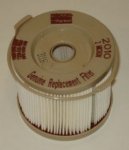ghostlymoron
Well-Known Member
Thanks for owning up to your mistake - I assumed that you'd misread the topic.>Every time the subject of fuel filters comes up, KellysEye claims that it's very important they have a bypass valve. Then somebody asks him what the valve is for, and he never answers.
Sorry it's oil filters not fuel filters.

